Do any of your kids struggle to remember math concepts throughout the summer? Wondering what math topics to focus on? Are you looking for ways to do this? If so, keep reading to discover key concepts and strategies for review.
#1 Addition and Subtraction
Addition and subtraction facts are building blocks for elementary math concepts that follow.
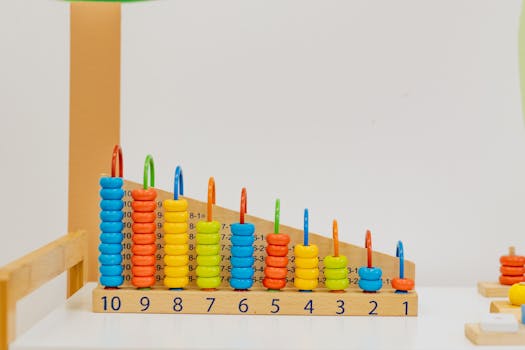
To begin with, students learn math facts with one-digit numbers.
Examples: 3 + 1, 4 + 8. Over time, more digits are included.
Next, once students understand the meaning of adding and subtracting numbers, they can begin to understand the meaning of opposite operations. For example, 12 – 7 = 5, therefore, 5 + 7 = 12. Triangle flashcards are a great way to learn both one and two-digit addition and subtraction.
Furthermore, to compare various triangle flash card products, enter “triangle addition and subtraction flash cards” into your search bar. Multiplication and Division sets are also available.
However, if you are looking for online practice, you may want to explore the Topmarks website. Other math topics are also included. Click the links below.
https://www.topmarks.co.uk/Interactive.aspx
https://www.topmarks.co.uk/maths-games/5-7-years/addition-and-subtraction
In addition, there are other similar websites that provide elementary math resources. However, not all sites are free. For example, a site may be offered free for only a day, week, or month. After this trial period, there will be a payment fee. Also note that the concepts, grade levels, and resources available may vary.
#2 – Multiplication and Division
Likewise, multiplication and division facts are significant concepts elementary math students need to memorize before middle school. This skill alone is a building block for more complex math tasks. Not knowing multiplication and division facts is like driving a car without wheels!
Furthermore, maybe your child’s teacher recommends practicing multiplication with problems that include two to three digits. If this is the case, the below resource will be most helpful. The color-coordinating templates guide the steps for solving. Practice problems also incorporate this method. Practice problems are also included.
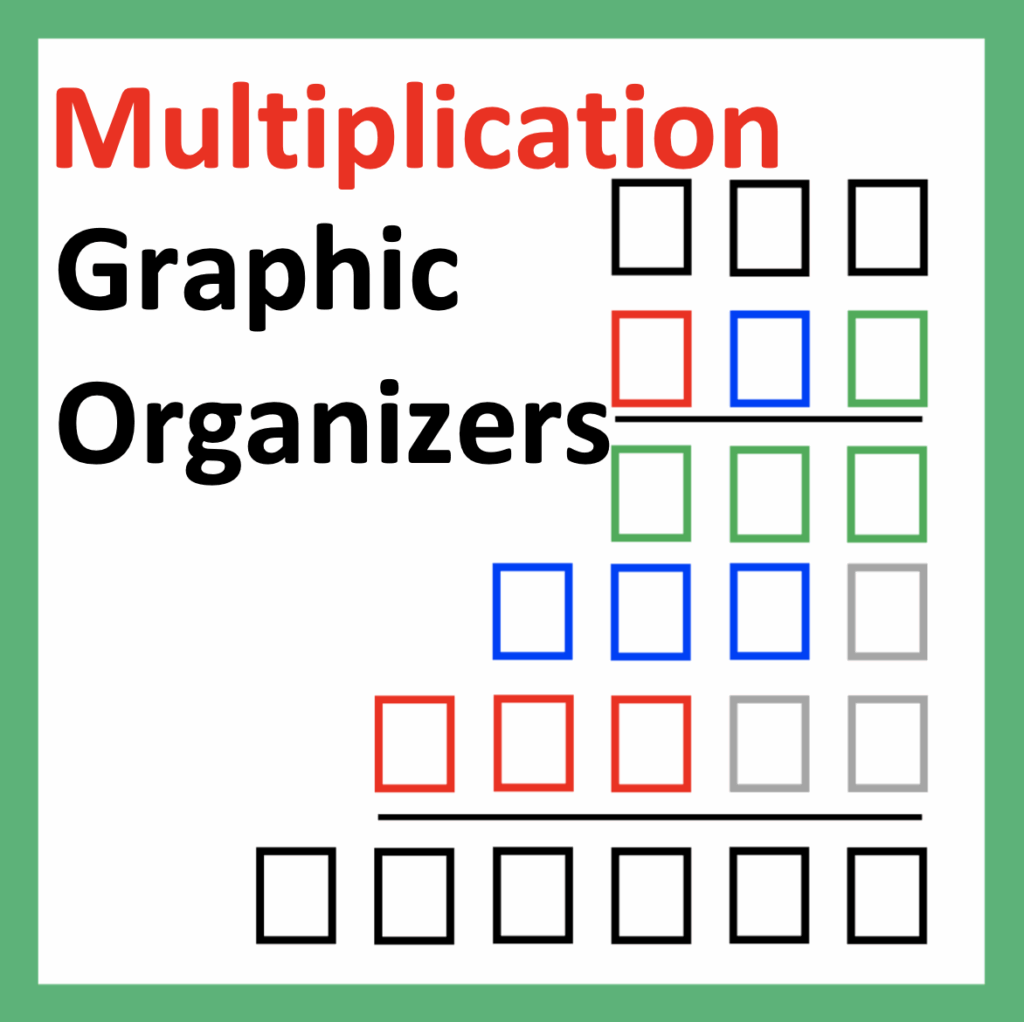
#3 – Inequality Signs in Elementary Math
In addition, reading inequality signs is an important skill used to compare values of amounts greater than > and less than <. For example, 7>2 as in, “Seven is greater than two.” For some students, this is a challenging concept.
Below is a resource using picture comparisons to help students easily visualize the terms greater than and less than. After students see the difference between the big cat and the small mouse, they can apply this concept when applying numbers.
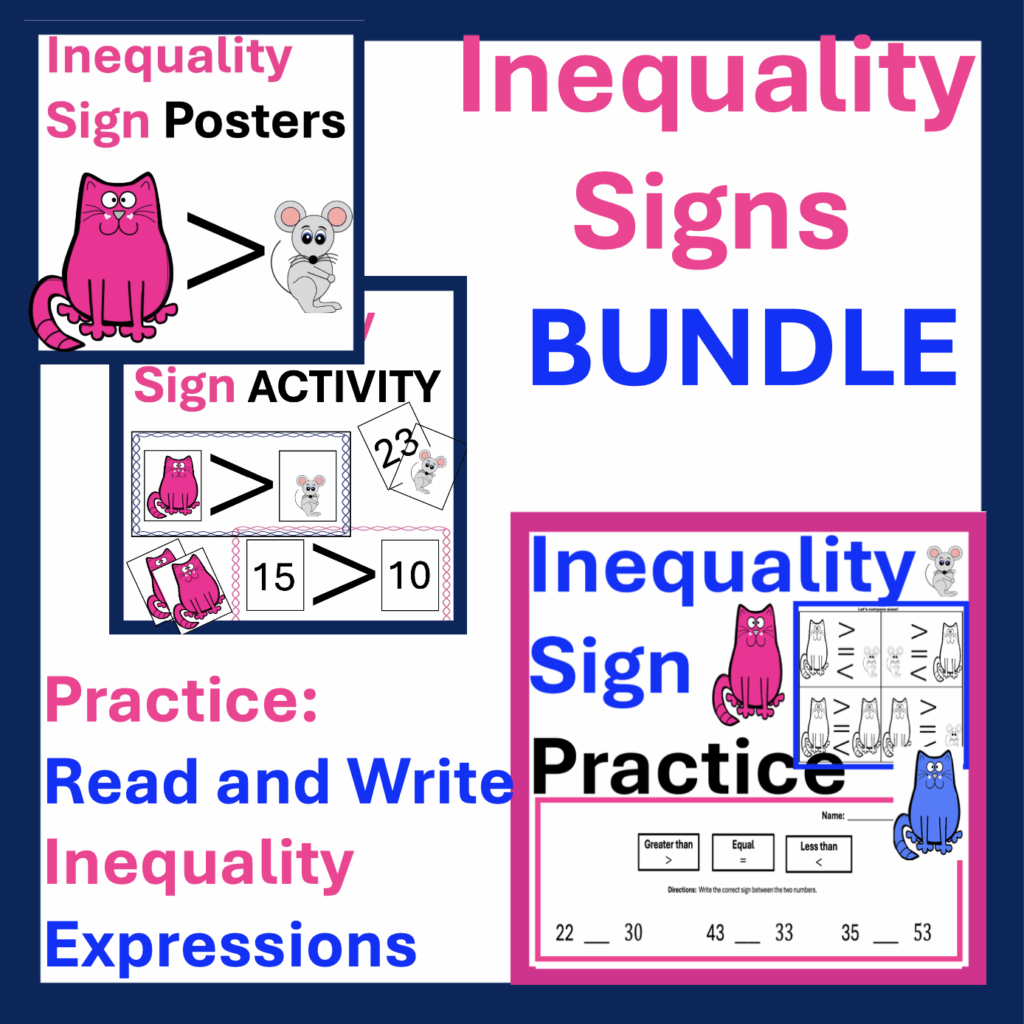
#4 – Fractions
A. Fraction Fun for Elementary Math
Finally, I cannot say enough about how important it is for students to understand basic fraction concepts. Some of the best ways to introduce these concepts are by using a visual, hands-on approach. Below are a few ideas.
- 1. Cut an apple into four equal parts. Ask: “What is more? (1/2) Half an apple or one whole apple? (3/4) Three-fourths of an apple or half an apple?”
2. Cut a pizza into eight slices. “Do you want 1/8 of the pizza or 2/8 of the pizza? Which one will be the biggest?”
- 3. Make a cereal snack mix. Example: 1 cup of round-shaped cereal, 2/3 cup of square-shaped cereal, 3/4 c. of nuts, 1/2 cup of pretzels, 1/3 cup dried cherries. This is only an example. You may wish to use different amounts and types of foods. Have fun!
- 4. Measurement Comparisons: Amongst school and craft supplies, measure objects representing fractions as whole, and mixed numbers: 1 inch, 2 inch, 1/2 inch, 1 1/2 inch. Measure larger objects, such as the length of hallways and rooms, reporting measurements in inches, centimeters, feet, and yards. Discuss. For example, if a hallway is 2 yards, it contains 6 feet, or 6 parts are included in 2 yards.
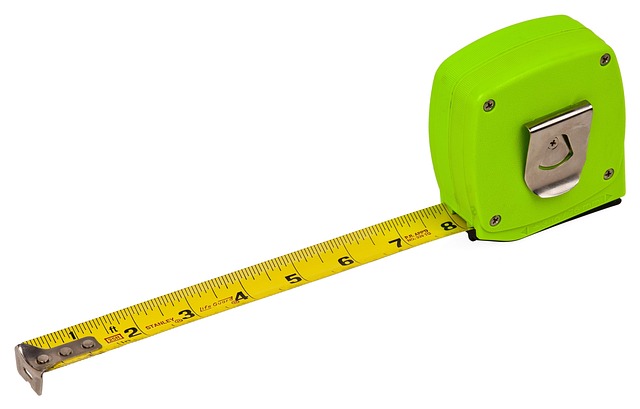
B. Learn Fractions through Note Values
Furthermore, has your child begun music lessons? If not, this may be an opportunity for math and music to link. The connection? Counting while playing music is another way to learn about fractions. Click on the link below to learn more.
C. Other Resource Ideas for Fractions in Elementary Math
Furthermore, you will find many resources for more practice opportunities for fractions. Below is a list of suggestions.
- 1. Ask your child’s teacher for the best resources that would be most helpful.
2. Use your search engine to explore other resources. For example, type in, “Elementary Teacher’s Favorite fraction games for third graders.”
3. Once you have a list of ideas, find the best deals.
- 4. Feeling creative? Are you inspired after viewing all the resources? You may have the parts and pieces of some of these games at home, such as game boards, dominoes, and dice. You may also have a collection of craft supplies. Create your own version using the resources you have. Your child may even have fun crafting the materials with you.
Other Related Posts
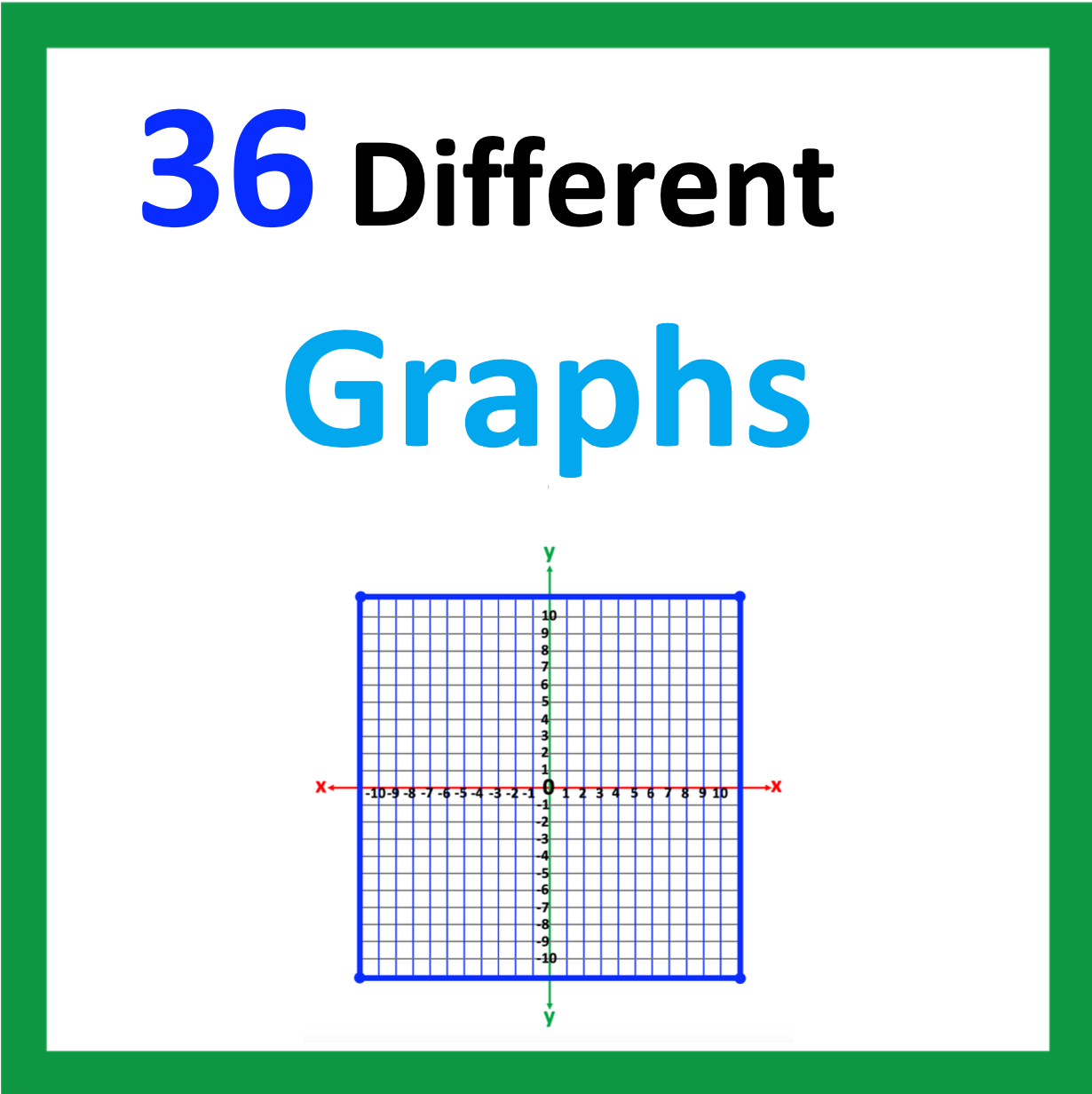
Looking for More Materials?
Click the button below to view more of my educational resources!
